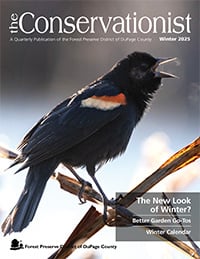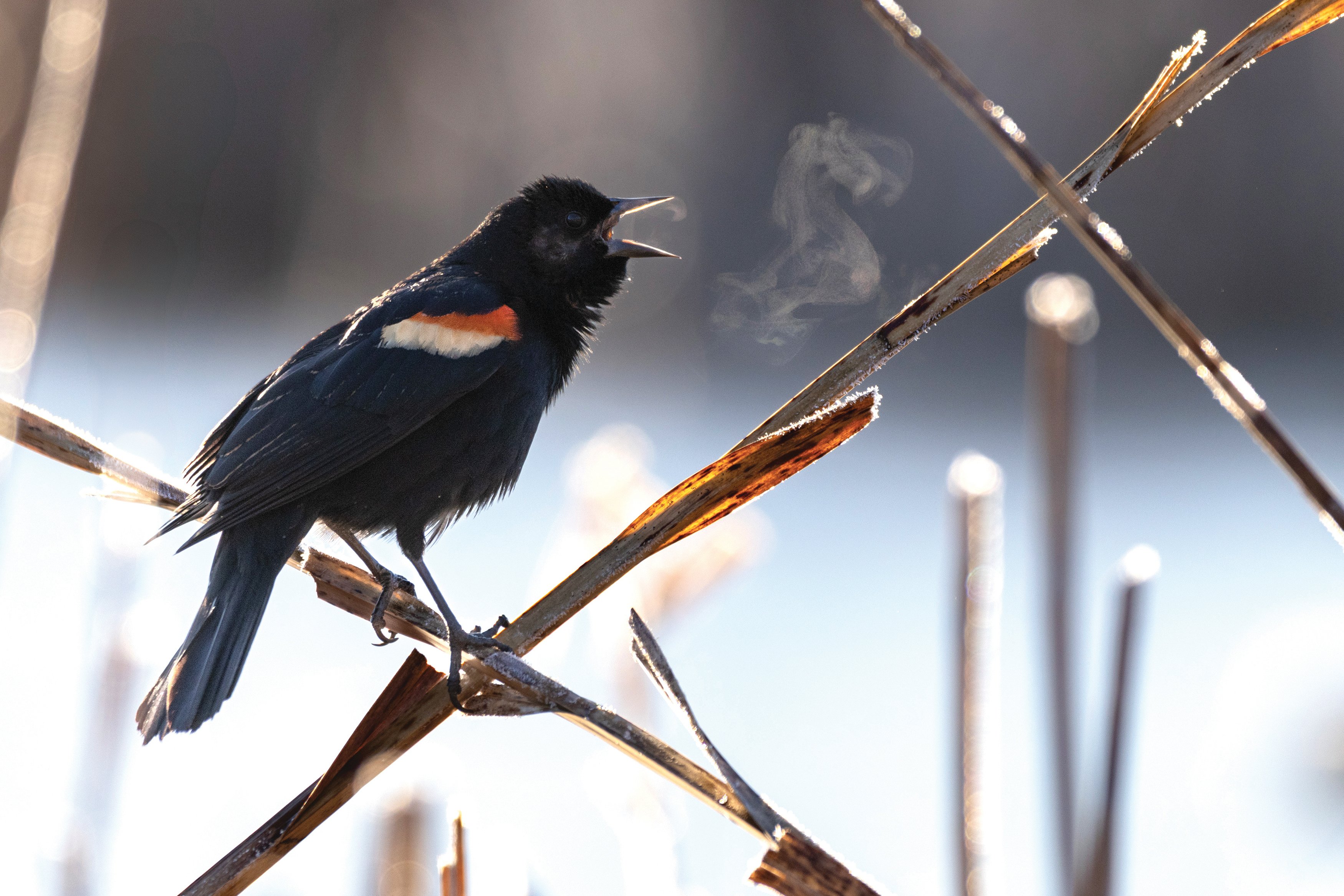
Conservationist Winter 2025
From the President

On Nov. 5 DuPage County voters showed their overwhelming support of the Forest Preserve District’s mission by approving a referendum to support District operations. This outcome highlights our community’s collective dedication to safeguarding the natural beauty and biodiversity of the county’s woodlands, wetlands, and prairies, ensuring their preservation for future generations.
This investment in our future enables us to continue preserving, restoring, and maintaining DuPage County’s forests, open spaces, and essential air and water quality. It will support our ability to acquire key lands to protect vital rivers, watersheds, and wildlife habitats, plant trees, and enhance flood control and drainage infrastructure.
Furthermore, it will provide us with the resources to continue offering nature education and outdoor activities for individuals of all ages while improving accessibility and ensuring safety in our forest preserves.
The funding will also allow us to enhance recreational facilities, including trails and campgrounds, ensuring they remain enjoyable and accessible for all.
With 63% of voters showing their approval, this outcome is a strong affirmation of the value placed on open spaces and environmental conservation throughout DuPage County. We do not take this responsibility lightly and are committed to ensuring these resources are preserved and cared for in the years to come.
Daniel Hebreard
President, Forest Preserve District of DuPage County
News & Notes
Nonnative Hydrilla Found in DuPage
Considered one of the world’s worst aquatic weeds, hydrilla was recently discovered in DuPage County, although not in a forest preserve. This is the first-known occurrence in DuPage and only the second-known report in Illinois.
The highly invasive hydrilla can grow up to an inch per day and form dense mats several feet thick that can severely interfere with boating and fishing and harm native aquatic wildlife. Control and eradication efforts can cost millions of dollars over many years.
Hydrilla moves from lake to lake via boats, boat trailers, fishing gear, and natural currents. To limit the spread of this invasive plant and other aquatic invasive species:
• Remove all plants, animals, and mud from any equipment that’s used in any body of water.
• Drain all water from boats and gear.
• Dry everything thoroughly with a towel or heat.
• Never dump plants or animals from aquariums or water gardens in any body of water.
If you think you’ve identified hydrilla, notify the Illinois Department of Natural Resources Aquatic Nuisance Species Program at dnr.ans@illinois.gov.
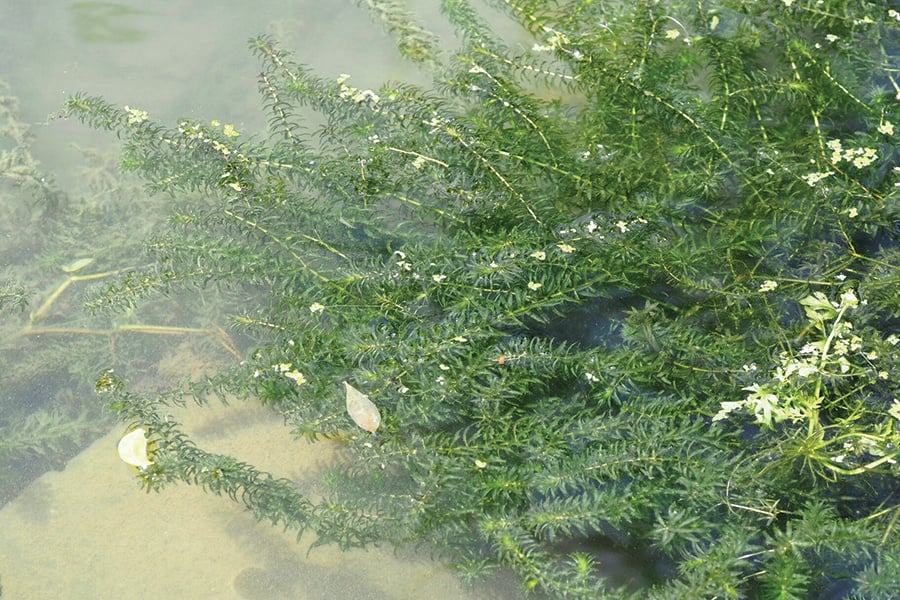
Fall Plantings 2024
Last fall Forest Preserve District forestry and landscape crews planted over 750 woody trees and shrubs harvested from the District’s nursery at Blackwell. Of the 37 different species, 85% are documented as native to DuPage. The other 15% — such as the eastern white pine being planted at the top — are native to Illinois and are used for visual or sound barriers or in other special situations.
Most of the plants are grown at the nursery (as shown in the photo at the bottom) from seed or acorns collected from known “remnant populations” of plants. These are plants known to grow here before much of the county was converted into cropland. This ensures they plant local genotypes adapted to northeast Illinois’ climate and growing conditions, which increases planting success. These plants are used in landscapes, reforestation projects, and areas ready for restoration after clearing of unwanted or invasive vegetation.
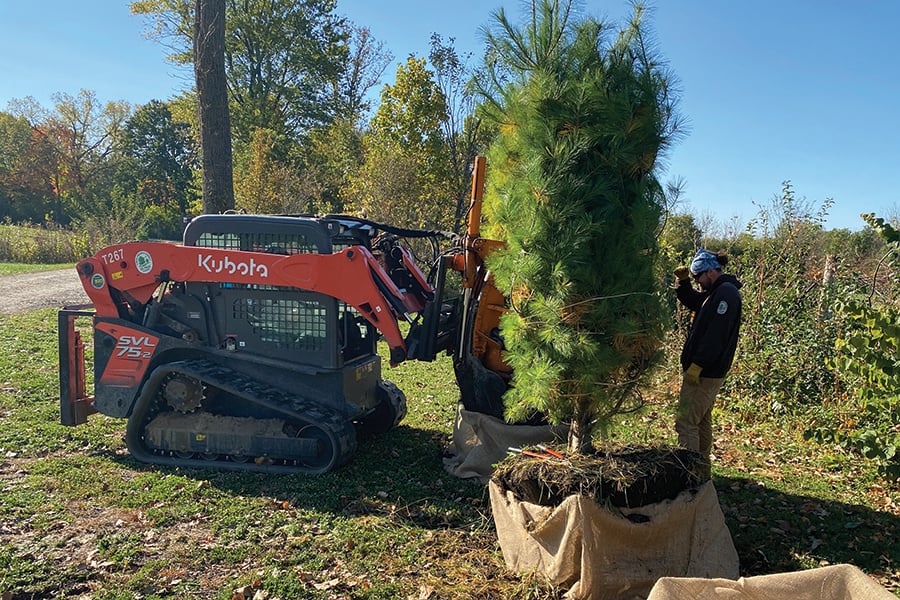
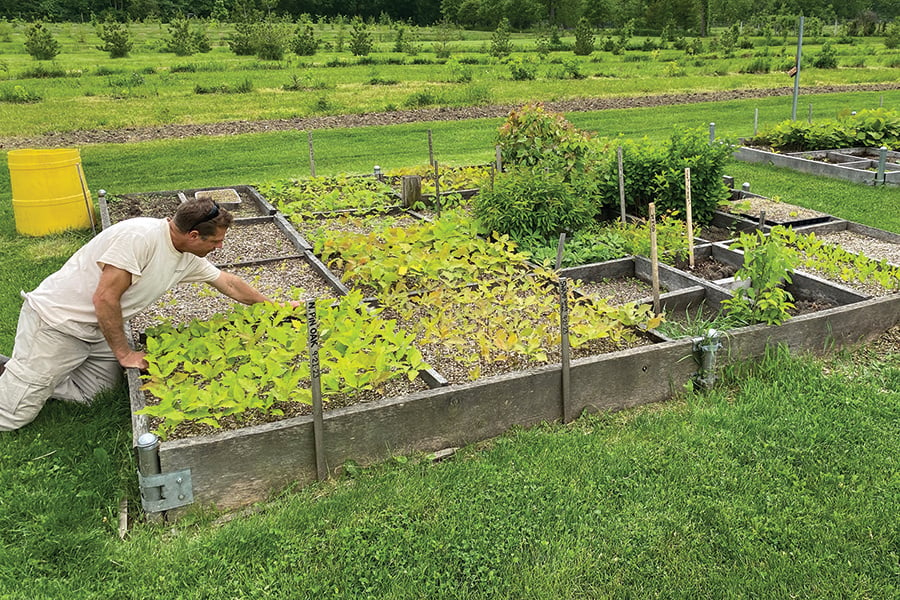
Collections Corner
Before computers, farmers used ledgers and record books to keep track of goods and finances. Kline Creek Farm has a number of ledgers that is uses for research and exhibits. The Frank Kline record book in particular, which Kline started in 1899, helps staff understand what life was like in the past. It’s stuffed with family letters and contains drawings from one of Kline’s sons as well as a scrap of fabric.
The book details income records from Kline’s blacksmith shop in Winfield and shows the amounts he charged to pasture neighbors’ animals at his farm. The ledger states that on Sept. 27, 1899, Kline loaned William Sears $600 to buy a house in Warrenville. On Jan. 31, 1904, he sold a cord of firewood to John Debolt, and on March 27 that same year he sold John Nelson 57 bushels of oats. On March 19, 1906, he hired Askes Nelson to work for $12.50 per month, a job, it reveals, that Nelson held until later that December.
Kline Creek Farm uses bits of information found in primary sources like this ledger to recreate the past to present to visitors. Stop by the farm this winter to see the oats from last summer’s harvest, the stack of firewood ready to keep the stoves lit, and life as it was inside the 1890s farmhouse.

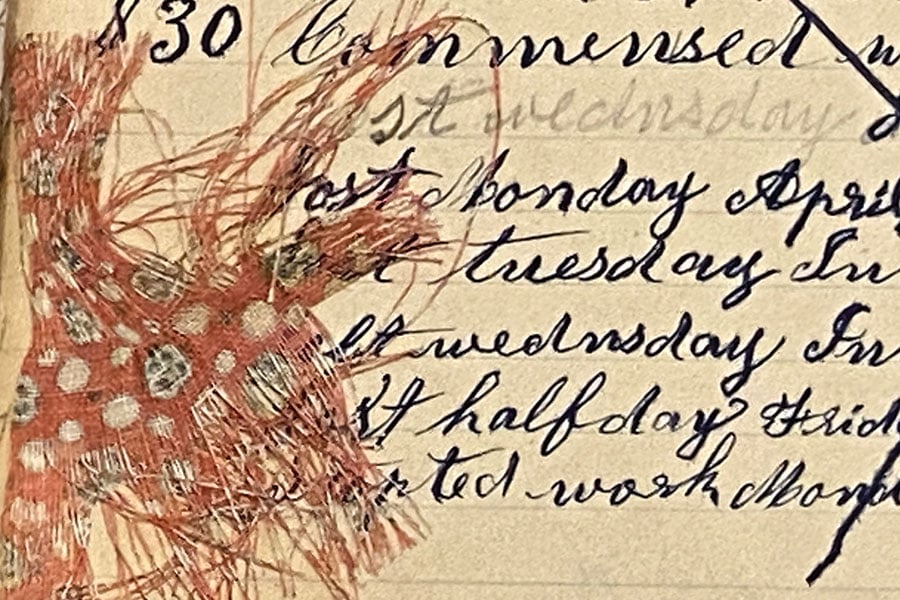
Thank You for Being a Friend
The Friends of the Forest Preserve District of DuPage County gratefully acknowledges those who donated $500 or more during the third quarter of 2024. The Friends engages the community in philanthropy to advance the District’s mission-aligned programs and master plan projects for the benefit of wildlife and wild areas and to increase sustainability in the forest preserves.
Learn more or donate at dupageforest.org/friends or mail your gift to Friends of the Forest Preserve District of DuPage County at 3S580 Naperville Road, Wheaton, IL 60189. To discuss your giving plans or learn about Friends’ board service opportunities, please contact Partnership & Philanthropy at 630-871-6400 or fundraising@dupageforest.org.
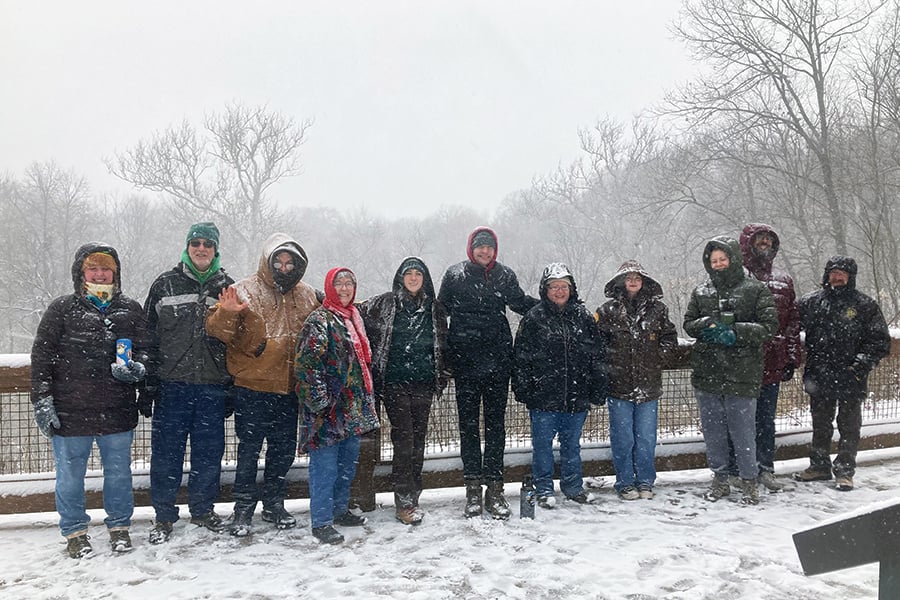
Gift of $10,000 or More
Anonymous
CNH Industrial Foundation
Gift of $5,000 – $9,999
Chicago Region Trees Initiative
Domtar Paper Company
Nicor Gas Company
Daniel W. Soline
Target
Gift of $2,500 – $4,999
Friends of Danada, Inc
nora fleming
Republic Bank of Chicago
Stantec Consulting Services, Inc.
Wheaton Bank and Trust
Gift of $1,000 – $2,499
The Baran Family Fund
Ferrari Plumbing, Inc.
Monica Sentoff Charitable Fund
Montano’s Landscaping
Donald and Susan Panozzo
Timothy Ramsey
The Richard Laurence Parish
Foundation
V3 Companies
Vulcan Materials Company Foundation
West Chicago Garden Club
Gift of $500 – $999
Rosemary and Robert Carroll
Eva Dahm
DuPage Birding Club
Illinois Legislative Sportsmen’s Caucus
Jo Ann and Andy Ginger Charitable
Fund
Madeline and Kenneth Kwiatkowski
Milton Township
Kathleen Murphy
Morgan Stanley
Wheaton Lions Club
Doug Zimmer
The New Look of Winter?
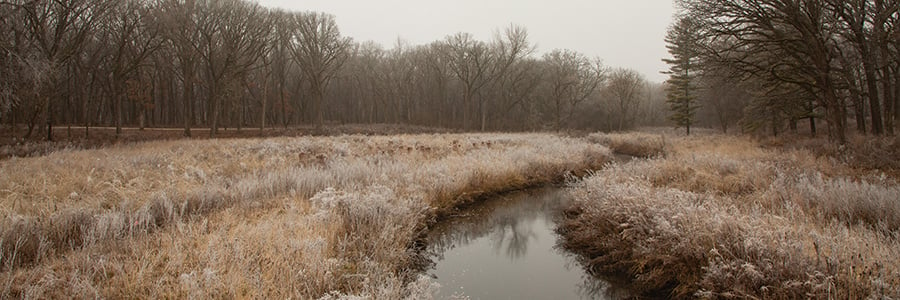
Winter used to bring to mind snow,sledding, and bitter cold temps, but recently, winters seem to have taken on a new identity.
According to data collected by the National Oceanic and Atmospheric Administration, Illinois’ average daily temperatures have increased by several degrees since the 1900s. Surprisingly, most of the warming has occurred during what was historically the coldest part of the year, winter and early spring. In our region, temperatures have increased by an average of 3 degrees, just enough to make winter in Illinois more unpredictable than it was a few decades ago. A milder winter can make exploring the outdoors feel more pleasant, but some side effects could affect local wildlife.
First, warmer temperatures can mean less snow. Currently, the data doesn’t indicate any long-term trends in snowfall, but it does show that snowfall has become more variable. While large snow events still occur, they happen less frequently, and the snow that does fall melts sooner. Having less snow on the ground leaves soil and animals more exposed to the elements.
Snow is a great insulator due to the large amounts of air that become trapped as ice crystals form. This trapped air slows heat transfer, much like the feathers in a down coat. On average, a foot of snow has an R-value of 12, the same as a 2-by-4 house wall filled with fiberglass insulation.
Even at lesser depths, snow still insulates. At 6 inches, a microclimate known as a “subnivian zone” can form at ground level. This layer can remain warmer than the air above and is a refuge for many types of animals.
Meadow voles are one of the species that benefit from this subnivian zone. These small rodents stay active all winter, foraging for vegetation, seeds, and bark to eat. When there is a layer of snow, voles are able to move about while staying protected from the elements. Decreased snow cover exposes voles not only to colder temperatures but also a higher risk of predation.
Snow cover also insulates the soil and provides extra protection for dormant animals. Species such as the American toad, smooth green snake, and eastern box turtle overwinter in underground burrows that extend below the soil frost line. Having a blanket of snow on top of the soil regulates the ground temperature and prevents extreme temperature swings, keeping their burrows frost-free.
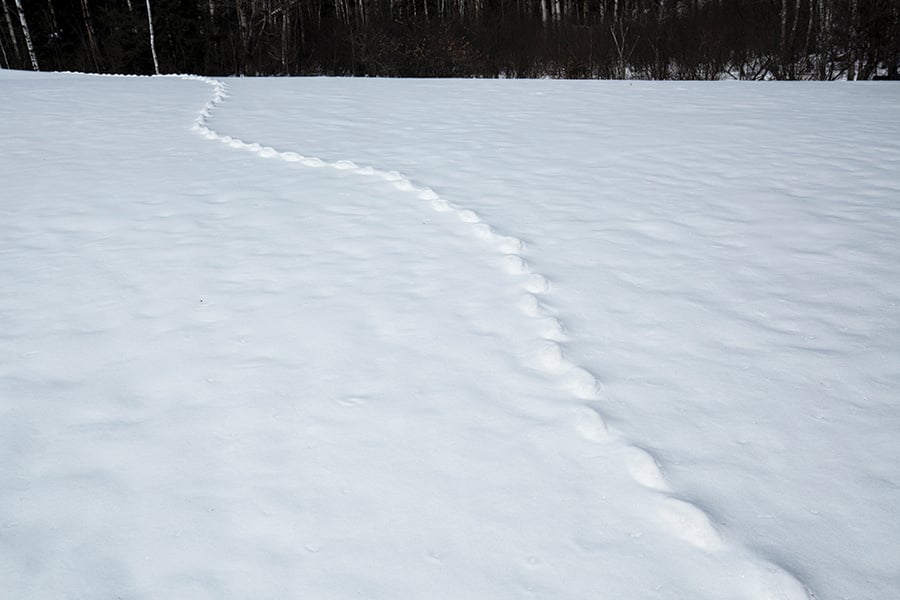
Even with just a few inches of snow, meadow voles stay warm and protected in the tunnels they build through the snow.
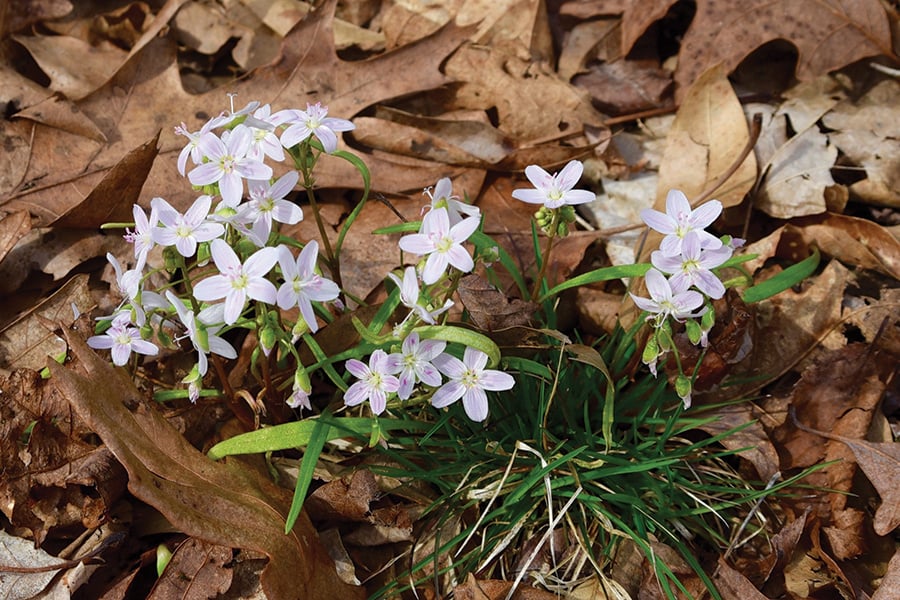
Spring wildflowers may bloom and fade before ground-nesting bees that rely on them for food can emerge.
Many plants also benefit from stabilized ground temperatures in winter. Soil insulated by snow cover doesn’t experience as many freeze-thaw cycles as exposed soil does. Repeated freezing and thawing can damage plant roots and thrust them above ground. A blanket of snow can also regulate soil moisture by protecting the ground from winds and sunlight, which can dry out plants’ roots.
Another consequence of warmer winters is the potential for phenological mismatch between species. This occurs when two species that typically interact change the timing of certain phases of their life becoming out of sync with each other.
Migratory songbirds and the insects they feed on are a great example. Typically, bird migration coincides with peak insect populations. If insect hatches occur earlier due to warmer temperatures, birds may arrive at their nesting sites after the peak emergence, missing out on an important food source.
Insects are also sensitive to this effect. In the Midwest, bumblebees are feeling the squeeze from warmer winters, especially in the southern reaches of their ranges. Mild temperatures at the end of winter signal spring ephemerals to emerge and flower sooner than they would during a cold winter. If this happens too early, ground-nesting bees emerge from their burrows after many of the flower species they rely on for nectar have already bloomed.
While we can’t directly reverse the warming trends seen in our winters, the conservation and restoration work the Forest Preserve District does helps mitigate these effects. Invasive plant removal, introduction of native species, and habitat restoration all work together to increase biological diversity and create local habitats that are robust and more resilient to change.
As an individual, you can make a difference as well. Leaving some leaf litter and plant material in your yard over winter can be a substitute for decreased snow cover. Planting spring wildflowers such as bloodroot, spring beauty, Virginia bluebell, and rue anemone can provide critical food sources to early emerging bees and other pollinators. Oak trees harbor hundreds of different insect species that remain dormant in their larval form on branches and in bark crevices, providing a bank of food for hungry birds.
Although it can be a bit unpleasant when the mercury drops, chilly winters play an important role in keeping things in balance. So this season, bundle up, and embrace the cold!
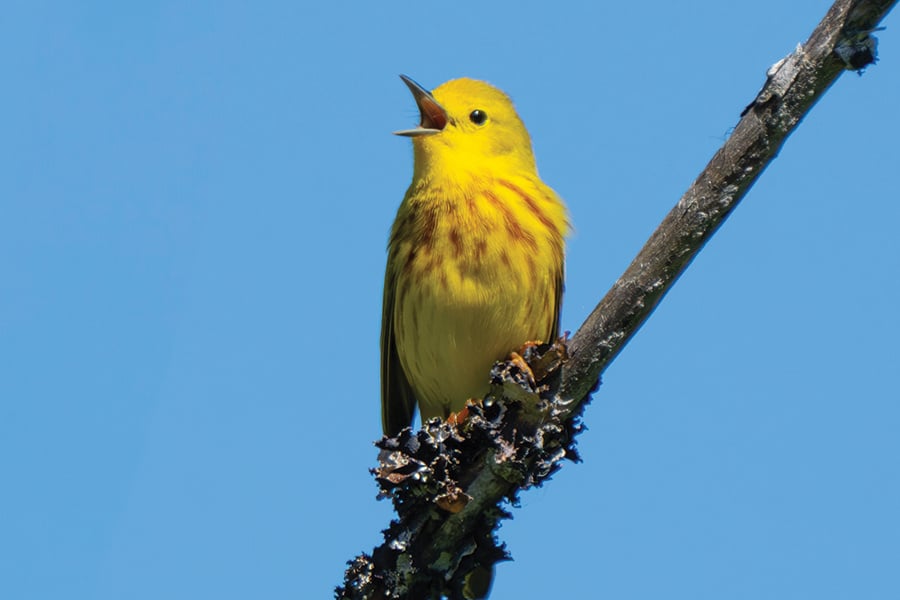
Warmer winters can cause the spring insect boom to occur earlier, sometimes long before hungry migrating birds arrive.
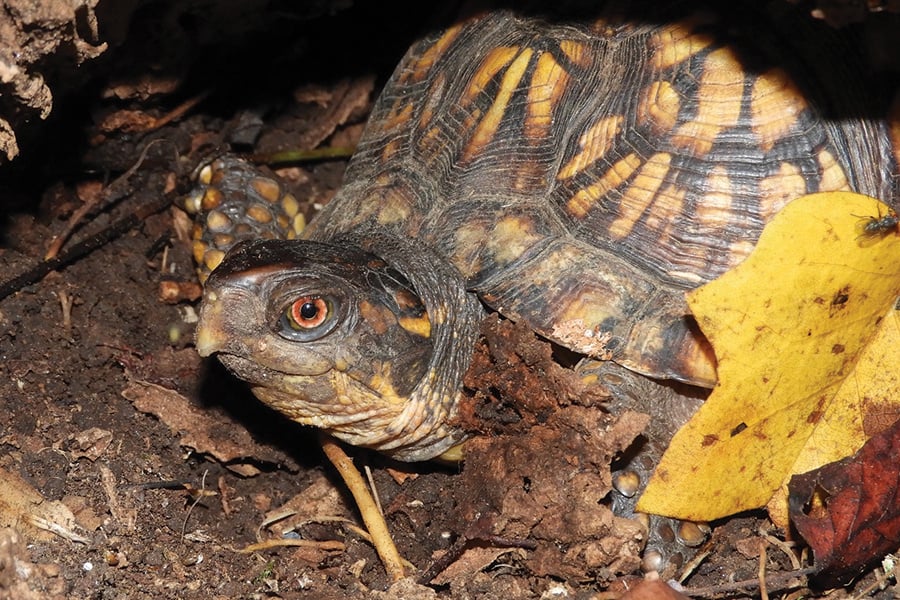
Eastern box turtles that overwinter in burrows benefit from layers of insulating snow that help keep their homes frost-free.
Two Ways to Go Green in One
Carbon emissions contribute to warmer climates, but native trees, shrubs, grasses, and wildflowers can counter some of its effects. These plants not only provide beautiful backyard vegetation but also store carbon in their roots and heartwood. Native grasses and wildflowers especially have deep roots, some 4 to 6 feet long. Even if the parts that grow above ground are periodically mowed, the roots remain alive and continue to retain the element. Some of the carbon decomposes and is released back into the atmosphere, but a large portion is stored in the soil even after the plant dies.
Better Garden Go-Tos
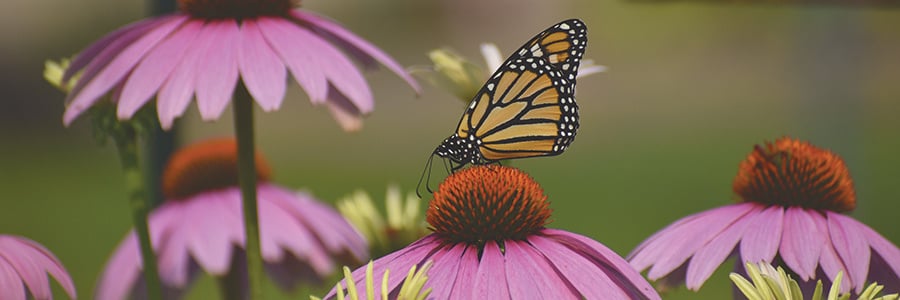
If you live in DuPage County, you’re no more than a 10-minute drive from a forest preserve. This means that your backyard is not too far away from a preserve the way the crow flies (or the butterfly or the wind- or bird-carried seed). But many plants that we choose to add to our landscapes aren’t necessarily beneficial to surrounding natural habitats. Because seeds easily spread by insects, birds, and wind, what grows in our backyards doesn’t always stay there. Fortunately, the next time you flip through your favorite gardening catalog to decide what add or replace, there are choices you can make that benefit not only your backyard but also the county’s native plants and wildlife.
By making a few simple changes in your landscaping, you can remove harmful plants and replace them with beautiful native species that benefit the local ecology. Your yard can become a valuable part of the larger ecosystem, providing habitat and resources for wildlife. Here are a few ideas to get you started!
Dame’s rocket became popular because of its delicate purple flowers, but just one of these nonnative plants can produce 20,000 seeds, creating dense stands in natural areas. For a touch of lavender in your late spring yard, plant native Virginia bluebells instead.
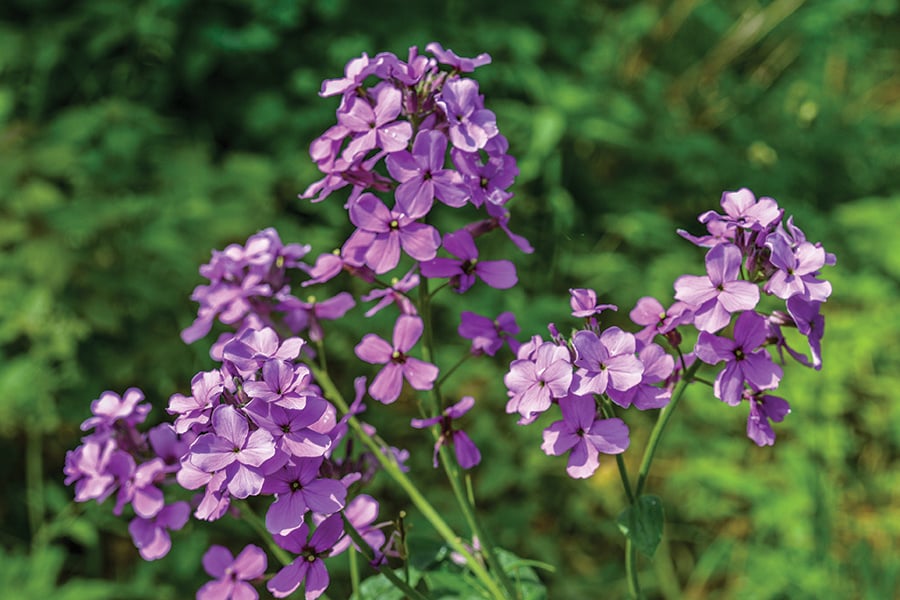
dame's rocket
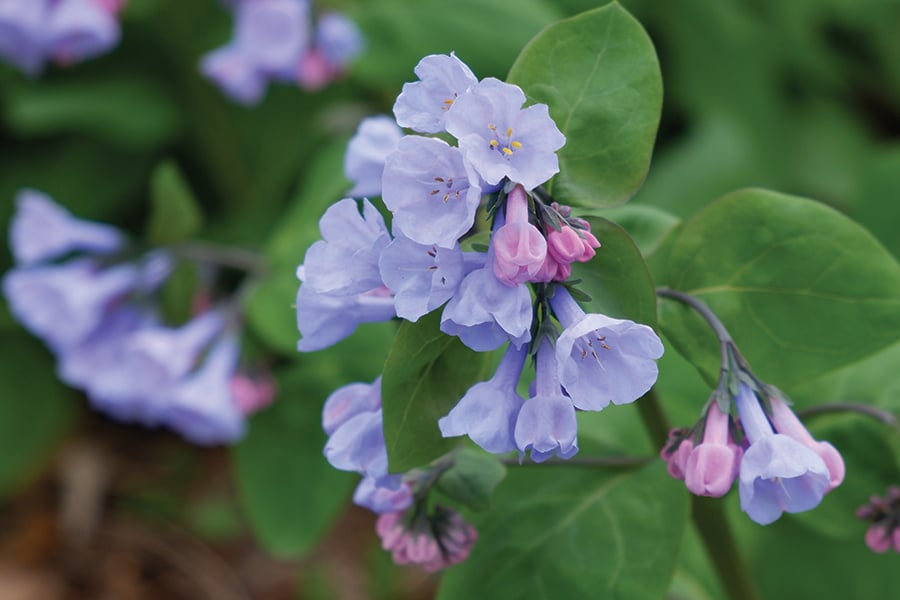
virginia bluebells
Because they grow fast in different conditions, Bradford pears became popular. But gardeners soon discovered the trees’ spring blooms have a foul smell. Also, once established, the trees are difficult to remove. Native downy serviceberry provides the same white spring blooms (minus the odor) plus berries that native wildlife love.
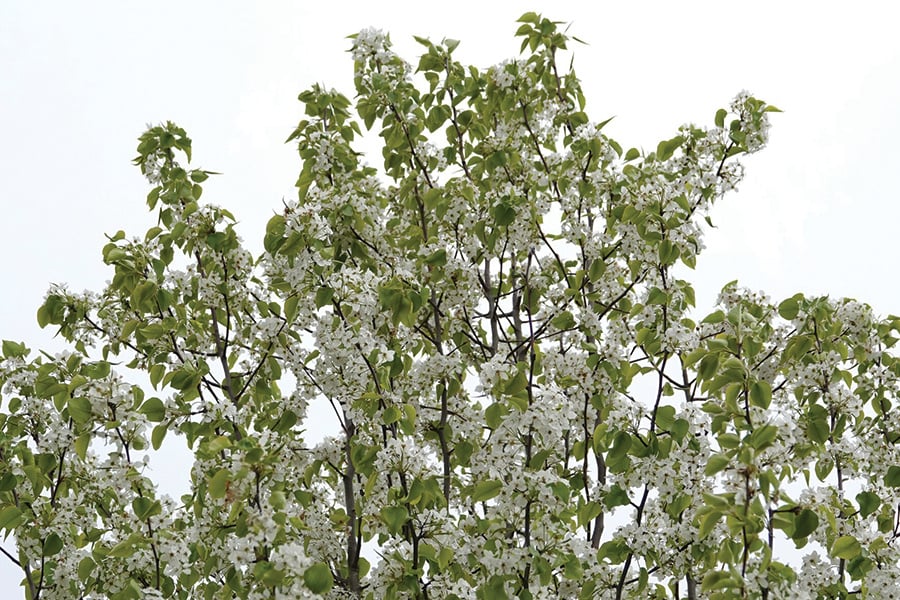
bradford pear
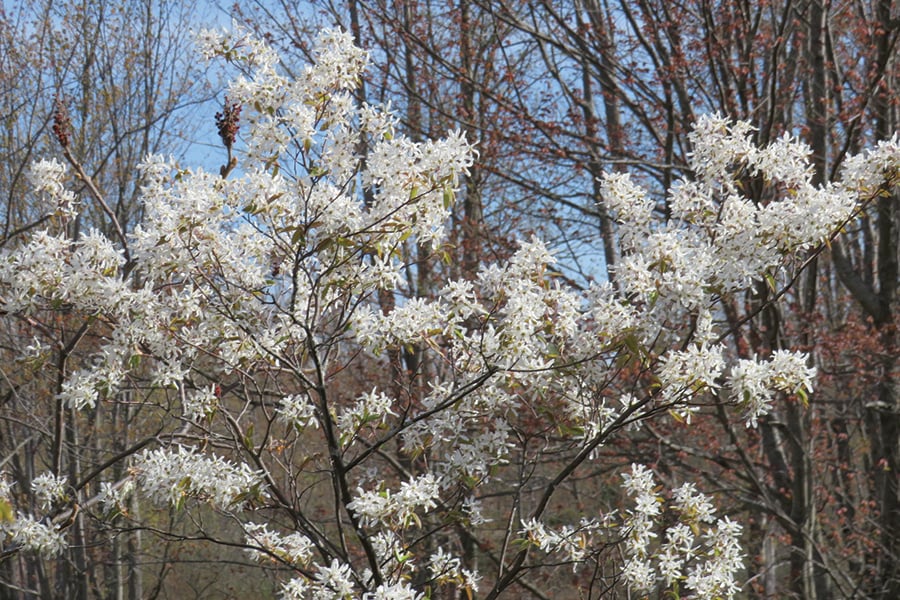
downy serviceberry
Many gardens feature Japanese barberry because the plant’s bright red berries attract birds. But animals that eat the berries quickly spread the shrub’s seeds into to grasslands and woodlands, where the plants take over where natives used to grow. Native nannyberry is a friendly alternative for gardeners and birds alike.
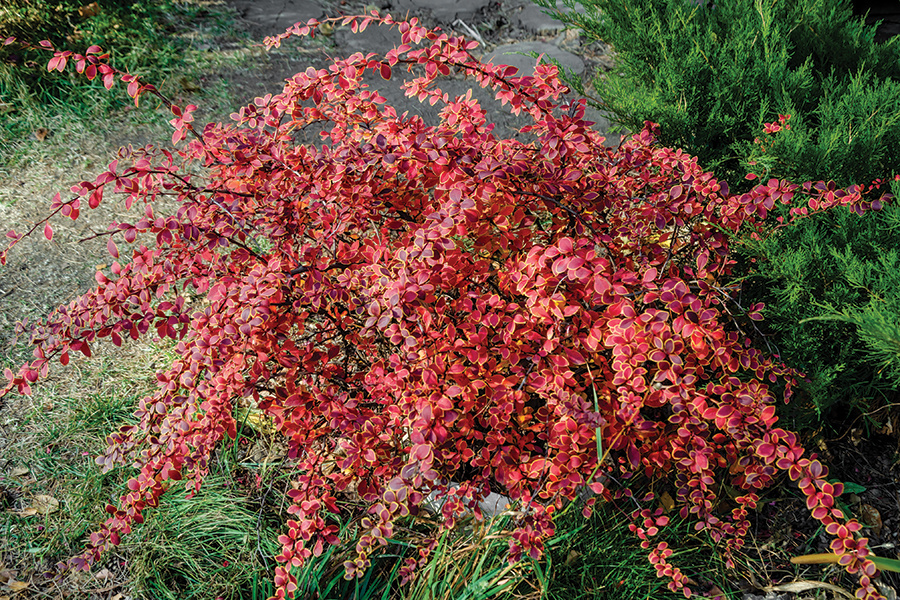
japanese barberry
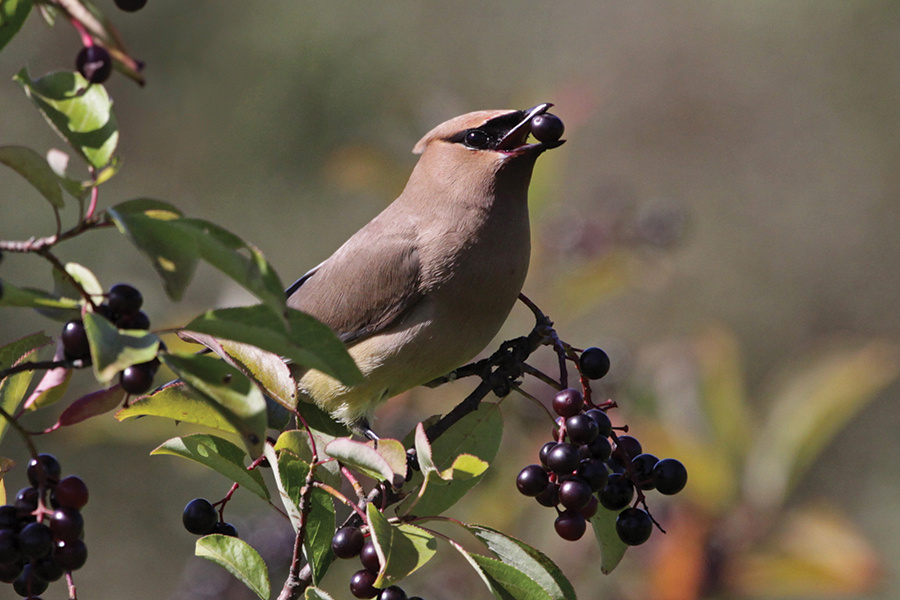
nannyberry
In the late 1900s, Norway maples were the go-to plant for parkways and backyards because they grew fast and provided a lot of shade — too much shade. Nothing can grow below one. Northern red oaks allow grasses and flowers to thrive underneath and provide wildlife with nutritious acorns.
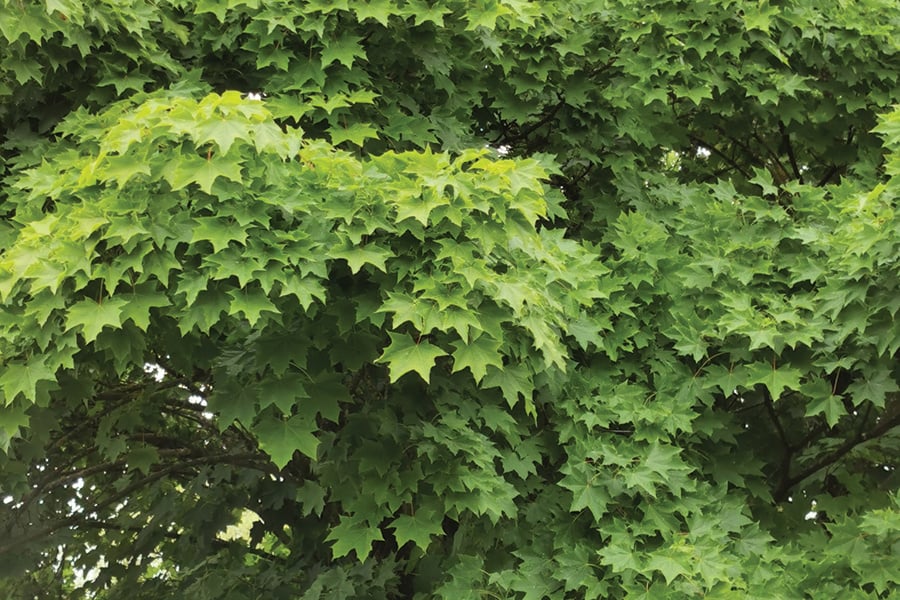
norway maple
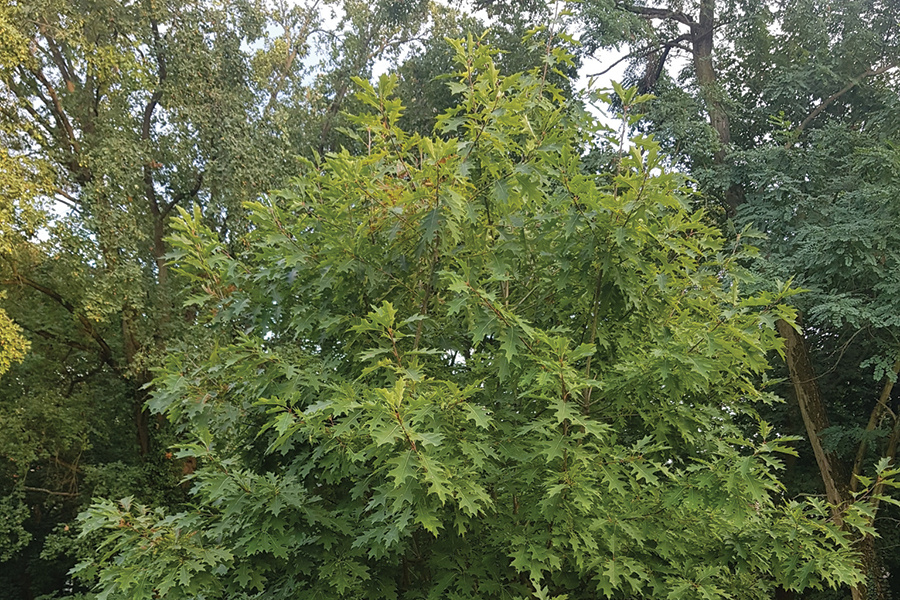
red oak
